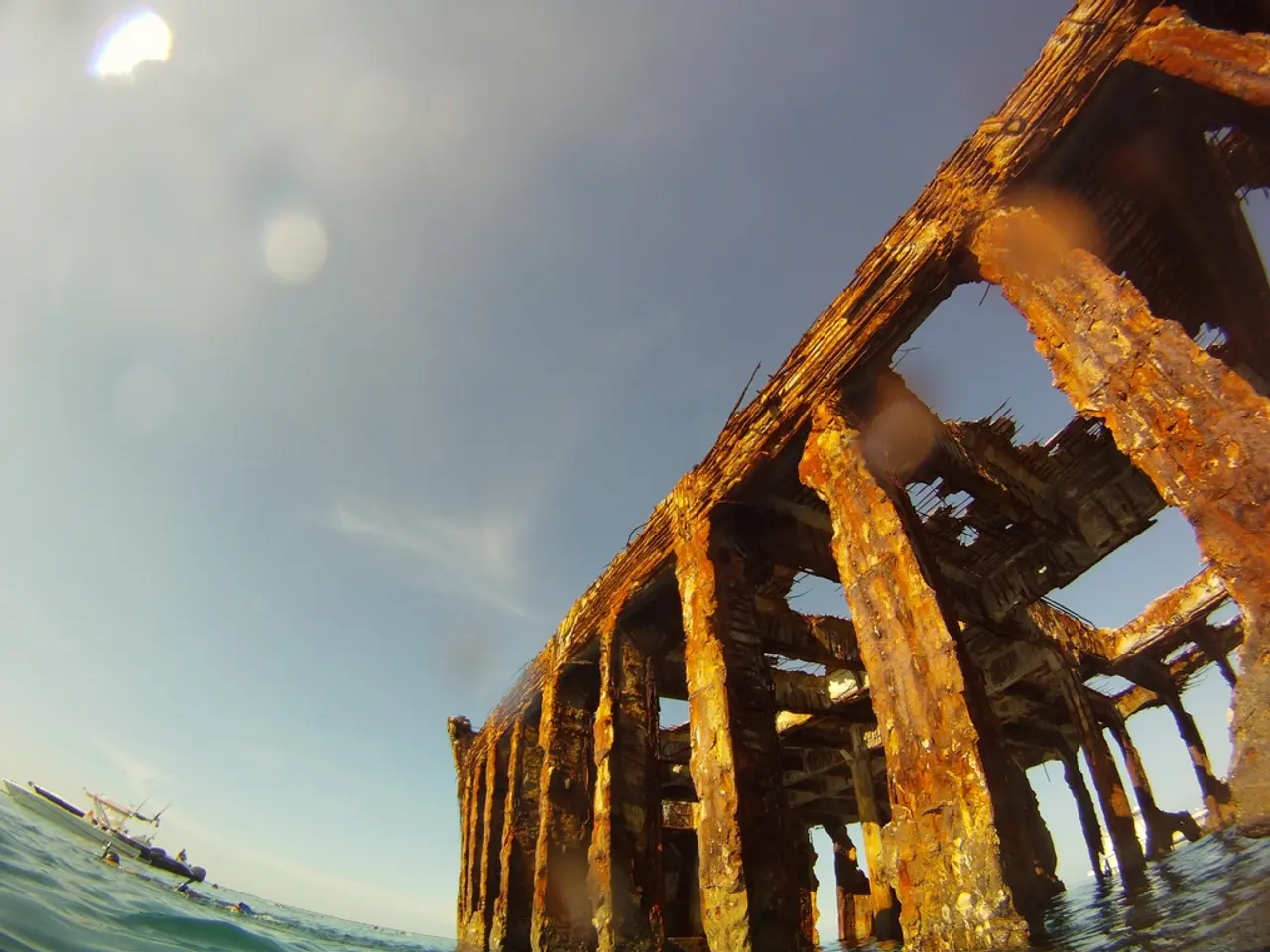Philippines' ships performing risky maneuvers, prompting China to accused them of collision incident
The South China Sea is once again a hotbed of tension, as a collision between two Chinese vessels and a Philippine Coast Guard ship took place at Scarborough Shoal on August 11, 2025 [1][2][5]. The incident has highlighted the ongoing territorial disputes and "gray zone" confrontations between China and the Philippines in the region.
Scarborough Shoal, also known as Panatag Shoal, is a contested maritime feature claimed by the Philippines, China, and Taiwan. It lies within the Philippines’ Exclusive Economic Zone (EEZ) under the United Nations Convention on the Law of the Sea (UNCLOS), but China asserts historic claims based on the "nine-dash line" [4]. The shoal has been a major source of tension in the strategic conduit for more than $3 trillion of annual ship-borne commerce [1][2].
The collision occurred during a high-speed chase in which Chinese ships tried to block a Philippine Coast Guard cutter from reaching the shoal. The crash was significant enough to cripple one Chinese coast guard vessel [1][2]. China has blamed the Philippines for provocations, alleging Philippine vessels intruded and ignored repeated warnings. However, Philippine officials have rejected these claims, emphasizing China’s aggressive tactics [2][5].
The incident has drawn regional and international concern. Japan, Australia, and New Zealand have condemned China’s conduct as dangerous and unprofessional, urging de-escalation and adherence to international law [2][4]. In response to rising tensions, the U.S. has deployed two warships to the area to conduct freedom of navigation operations, emphasizing support for the Philippines and regional security [2][3].
Following the collision, China has increased its armed coast guard patrols near the shoal, including helicopter and drone support, further escalating the standoff [4]. Philippine and allied officials, including Australian counterparts, have reaffirmed their commitment to upholding the rules-based order in the South China Sea amid growing Chinese pressure [4].
The August 2025 collision and subsequent maneuvers exemplify China’s broader naval buildup and assertive posture in contested waters, challenging regional actors and international maritime law [3]. The incident also saw heightened aerial tension, including a Chinese fighter intercepting a U.S. plane, underscoring the "incredibly tense" security environment [3].
In response to the collision, the Philippines has denied responsibility, stating that their actions did not endanger the safety of Chinese vessels and personnel [1]. The Philippines' foreign minister, Theresa Lazaro, stated that the collision was not caused by their actions [6].
The confrontation at Scarborough Shoal is the latest in a series of incidents between Manila and Beijing amid heightened tensions over territorial disputes in the South China Sea. The latest incident underscores the precarious and volatile nature of sovereignty claims in the region and the need for diplomatic dialogue and adherence to international law to maintain peace and stability.
References:
[1] Associated Press. (2025, August 12). China, Philippines Trade Accusations After Collision at Sea. The New York Times. Retrieved from https://www.nytimes.com/2025/08/12/world/asia/china-philippines-collision-sea.html
[2] BBC News. (2025, August 12). China, Philippines trade blame over South China Sea collision. Retrieved from https://www.bbc.com/news/world-asia-61179693
[3] CNN. (2025, August 13). China and the US are ratcheting up tensions in the South China Sea. Here's why it matters. Retrieved from https://edition.cnn.com/2025/08/13/asia/china-us-south-china-sea-tensions-intl/index.html
[4] Reuters. (2025, August 12). China says it will take necessary countermeasures after collision with Philippine vessel. Retrieved from https://www.reuters.com/world/china/china-says-it-will-take-necessary-countermeasures-after-collision-philippine-vessel-2025-08-12/
[5] The Diplomat. (2025, August 12). China, Philippines Clash at Scarborough Shoal: What You Need to Know. Retrieved from https://thediplomat.com/2025/08/china-philippines-clash-at-scarborough-shoal-what-you-need-to-know/
[6] Philstar.com. (2025, August 13). DFA: Collision at Scarborough Shoal not caused by PH vessels. Retrieved from https://www.philstar.com/headlines/2025/08/13/2147387/dfa-collision-scarborough-shoal-not-caused-ph-vessels
The world has taken notice of the escalating tension in the South China Sea following the August 11, 2025 collision at Scarborough Shoal. This incident, a major source of concern in the region, has sparked diplomatic dialogue and calls for de-escalation from countries such as Japan, Australia, and New Zealand [2][4]. Meanwhile, politics and general news outlets have reported on the ongoing war-and-conflicts and crime-and-justice issues raised by the disputes [1][3]. Amid the growing Chinese pressure, Philippine officials have reaffirmed their commitment to upholding the rules-based order in the South China Sea [4]. Art historians, however, may find parallels between the ongoing territorial disputes and the political artistry involved in asserting and contesting claims [6].








